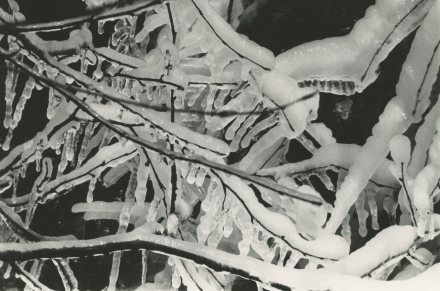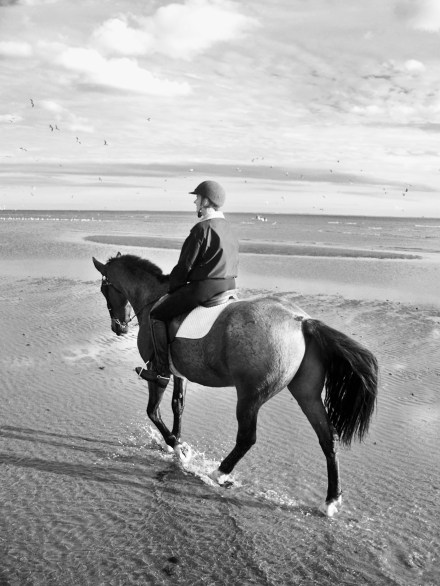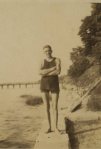When I walked in the door 30 years ago and took a look around at The Newtown Bee’s newsroom, it was the most curious newspaper I had ever seen. Among antiques, a wooden carousel horse, and bee memorabilia was a giant ball of tin foil in the publisher R. Scudder Smith’s office, marking decades of sandwiches for lunch.
The Bee’s offices on Church Hill Road building are just down the hill from the old congregational church on Main Street in Newtown, Connecticut. Folklore has it the holes in it’s rooster weathervane atop the steeple were made by bullets shot by Rochambeau’s army on his way to Danbury to fight the British in 1777. In front of the church, in the middle of the state highway, sits a 150-foot tall metal flagpole. Old glory waving at the passing motorists.
Cub Reporter
Fresh out of college, in my early 20s, this journalist was ready to take on the world, to be a member of the fourth estate, to probe government, to investigate for the public good. Hired on October 28, 1985 as a staff reporter for the police beat, I ended up writing about roaming sheep, flags stolen off the pole and dead people.

Juxtaposed with the vintage ephemera that surrounded my desk was the new computer monitor with its green glowing LED screen. It was cutting edge newspaper publishing in the 1980s. My editor Curtiss Clark sat in a small office whose window abutted my desk. Sometimes he peered through the window like he was looking through a two-way mirror watching the phone interrogations by his reporters on the townspeople of Newtown.

Cub Reporter Lisa at her desk at the Newtown Bee ~ 1986
My first story was about a one million dollar property transfer from a doctor’s estate to Danbury Hospital for a new wing and a tower. It was to be named in Dr. Stroock’s memory. As part of the story, I toured his 300-acre Buckeye Farm on the corner of Cemetery and Flat Swamp roads, located in Newtown’s Poverty Hollow district. This part of town was dotted with dairy farms, rolling pastures and landscapes that screamed bucolic.
Missing Wives
Little did I know, that a year earlier, just down the road was a barn belonging to a young mother who was missing. In fact, her case kicked off a string of missing Newtown wives and suspect husbands — Elizabeth Heath, Helle Crafts and Regina Brown — all in the 1980s. These murder cases would embroil and devour the Newtown Police Department, for which I had just been hired to cover as my beat.
About a year after I started my Bee tenure — on Nov. 19, 1986 — Storm “Carl” battered the small New England town. This late autumn snowstorm encased everything, including the power lines, in icy inches. A photographer from our rival daily newspaper, The News-Times in Danbury, had traveled to the top of Castle Hill. He captured one of the most iconic images, on one of most unforgettable days. White buildings, a gray steeple, snow-covered evergreens and the flagpole took on a silent blue hue. The only color in the photo was the American flag, the one frequently stolen, blowing in a stiff breeze.

Newtown, Connecticut ~ View From Castle Hill ~ November 19, 1986
There was no power. The town was cold. The Bee offices were closed that morning. I stayed home. To stay warm, I nestled in my bed with my dogs, since my electric heat would not work. Looking out my window, all I saw was my breathe and ice.

View from my bedroom window ~ After Storm Carl ~ November 19, 1986
Regina Brown, a 34-year-old American Airlines stewardess, was at her Whippoorwill Hill Road home that morning. In the middle of a divorce from her airline pilot husband, she felt vulnerable after the storm. Her house too was heated by electricity. There was a coal stove in the basement that would provide some warmth, but she needed help. Against her better judgment — she did have three young children to keep warm after all — she called her estranged husband, their father, to come over to the house. To the same house that the courts had barred him from entering with a restraining order just a month earlier based on a history of domestic violence. Storm Carl forced Willis Brown, Jr. back into Regina’s Brown’s life.
But what none of us knew that morning, is that another Newtown airline stewardess, Helle Crafts, with three young children, in the midst of a divorce from her airline pilot husband, who lived less than three miles away from Regina, had just been murdered.

















































